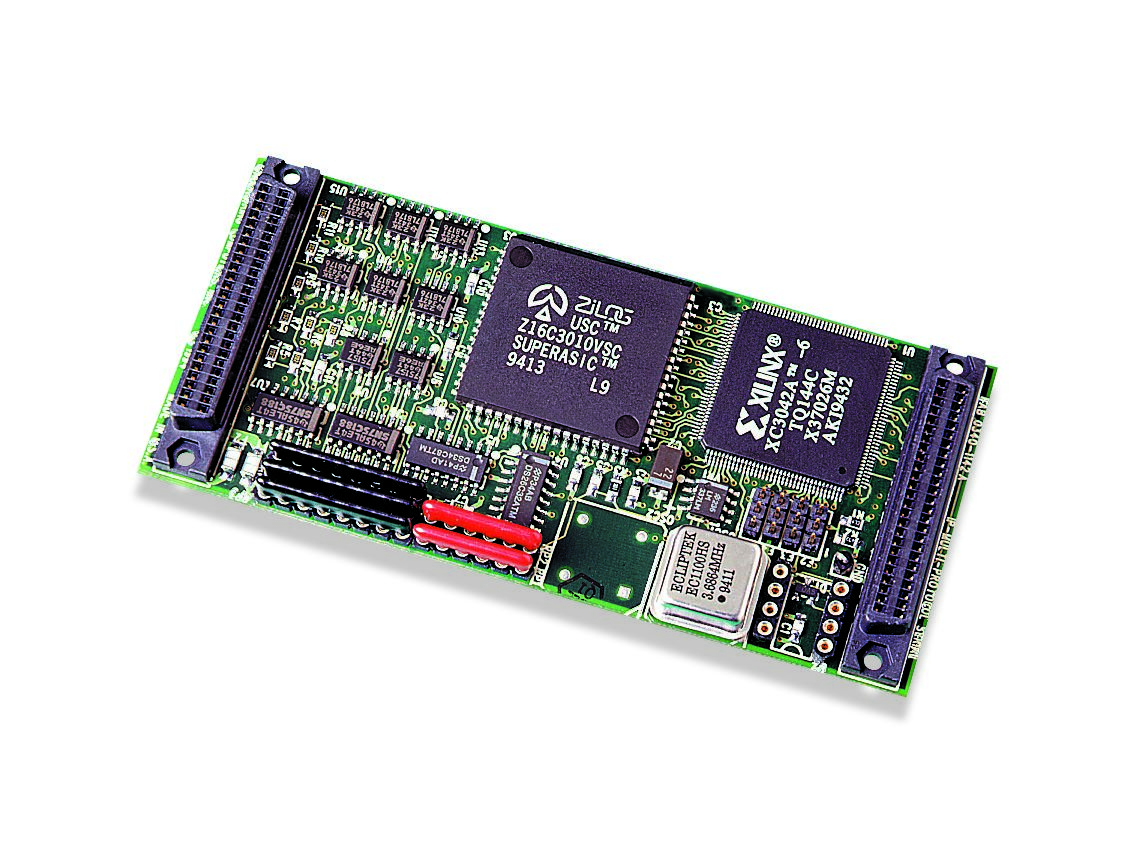
As VMEbus became the industrial bus of choice in the 1980s, the standard IC moved from a 20-pin MSI DIP to a VLSI high pin count surface mount device. Although the functionality of standard boards increased dramatically, the average selling price remained at about $2500. This high per-slot cost prompted manufacturers to continue to place as much functionality on each board as possible, to keep the total slot and total system costs as low as possible. This trend increased the basic functionality granularity (the smallest purchasable function) 10 to 50 fold. It was no longer practical to purchase separately a small number of serial lines or a small amount of memory. Many manufacturers attempted to remedy this problem by offering proprietary “daughter modules” for their processor boards. At least 20 different such proprietary offerings were on the market by the end of the 1980s.
At this time, GreenSpring Computers, under the technical direction of Kim Rubin, created a module with the specific design and intent that it become an open, widely accepted standard. GreenSpring Computers introduced the module and its specification as an open standard at BUSCON in 1988.
When the modules were introduced, GreenSpring incorporated features that were found in only a few, if any, other modules:
- Up to four modules fit on one VME or PC-AT board, for high modularity
- Bus and processor independent; supported both Motorola and Intel byte ordering
- Simple, synchronous interface made Modules and Carriers easy to design
- Rugged mechanical mounting, for ease of use and high reliability
- Defined ID space for configuration management
- Low cost
The concept caught on, and by 1994 over 80 companies were designing and offering products to this standard, on at least seven standard buses. GreenSpring called their modules “IndustryPacks®,” but each manufacturer was free to use whatever trade name they wished. The term “IP Modules” is commonly used, a term that is now in the public domain.
In 1991, the Motorola Computer Group incorporated the IP Module specification into its 68040 based MVME162, implementing four IP Module positions in a single VME slot. This helped propel the acceptance of the specification.
At the start of 1994 a formal standards committee, VITA 4, was put together under the VITA Standards Organization, which had received accreditation as a standards organization under ANSI. Most of the committee’s work was done via internet, a new concept at the time, which proved effective. The purpose of the committee was to validate and clarify the existing specification. In particular, timing details for 32 MHz and DMA operation were clarified. Also, the specification was reformatted, with numbering added for easier reference and formality. The ANSI/VITA 4-1995 (S2011) IP Modules standard is still available.
[Image IP-MP Serial_ds: Industry Pack, Courtesy of Abaco Systems]
